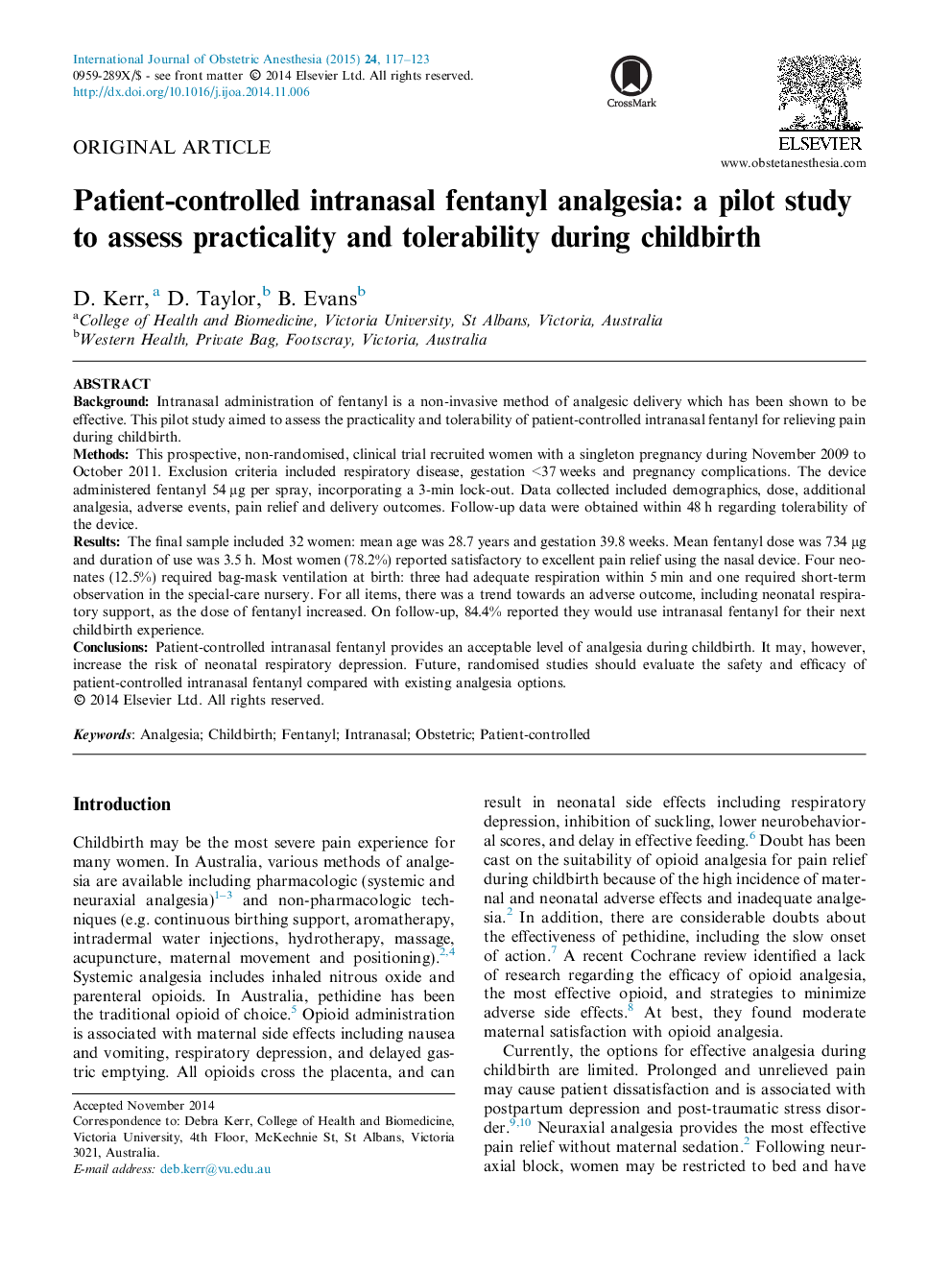| کد مقاله | کد نشریه | سال انتشار | مقاله انگلیسی | نسخه تمام متن |
|---|---|---|---|---|
| 2757580 | 1567514 | 2015 | 7 صفحه PDF | دانلود رایگان |
• Intranasal self-administration of fentanyl for analgesia in childbirth was assessed in a pilot study.
• Intranasal self-administration of fentanyl was associated with few maternal side effects.
• A trend for increased adverse events and neonatal respiratory support occurred with higher doses.
• The majority of women reported a willingness to use this analgesic option in the future.
BackgroundIntranasal administration of fentanyl is a non-invasive method of analgesic delivery which has been shown to be effective. This pilot study aimed to assess the practicality and tolerability of patient-controlled intranasal fentanyl for relieving pain during childbirth.MethodsThis prospective, non-randomised, clinical trial recruited women with a singleton pregnancy during November 2009 to October 2011. Exclusion criteria included respiratory disease, gestation <37 weeks and pregnancy complications. The device administered fentanyl 54 μg per spray, incorporating a 3-min lock-out. Data collected included demographics, dose, additional analgesia, adverse events, pain relief and delivery outcomes. Follow-up data were obtained within 48 h regarding tolerability of the device.ResultsThe final sample included 32 women: mean age was 28.7 years and gestation 39.8 weeks. Mean fentanyl dose was 734 μg and duration of use was 3.5 h. Most women (78.2%) reported satisfactory to excellent pain relief using the nasal device. Four neonates (12.5%) required bag-mask ventilation at birth: three had adequate respiration within 5 min and one required short-term observation in the special-care nursery. For all items, there was a trend towards an adverse outcome, including neonatal respiratory support, as the dose of fentanyl increased. On follow-up, 84.4% reported they would use intranasal fentanyl for their next childbirth experience.ConclusionsPatient-controlled intranasal fentanyl provides an acceptable level of analgesia during childbirth. It may, however, increase the risk of neonatal respiratory depression. Future, randomised studies should evaluate the safety and efficacy of patient-controlled intranasal fentanyl compared with existing analgesia options.
Journal: International Journal of Obstetric Anesthesia - Volume 24, Issue 2, May 2015, Pages 117–123
